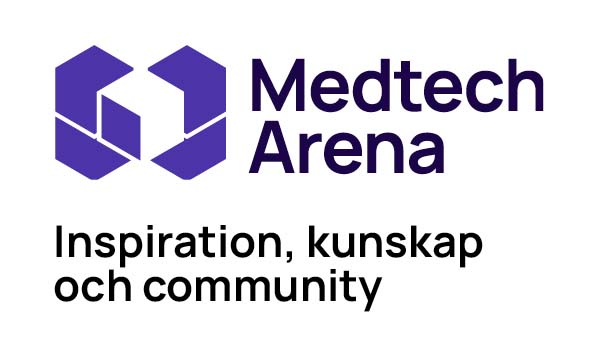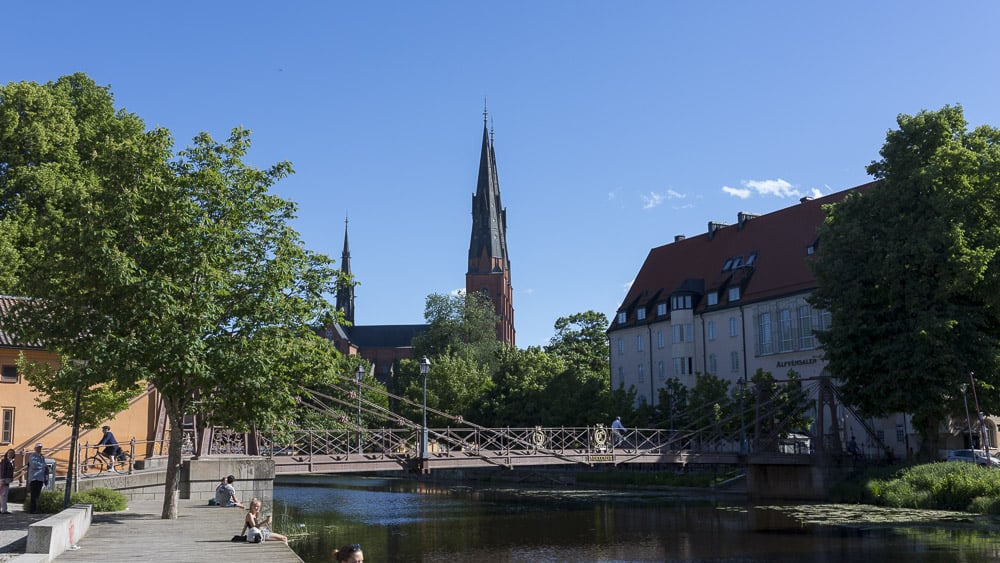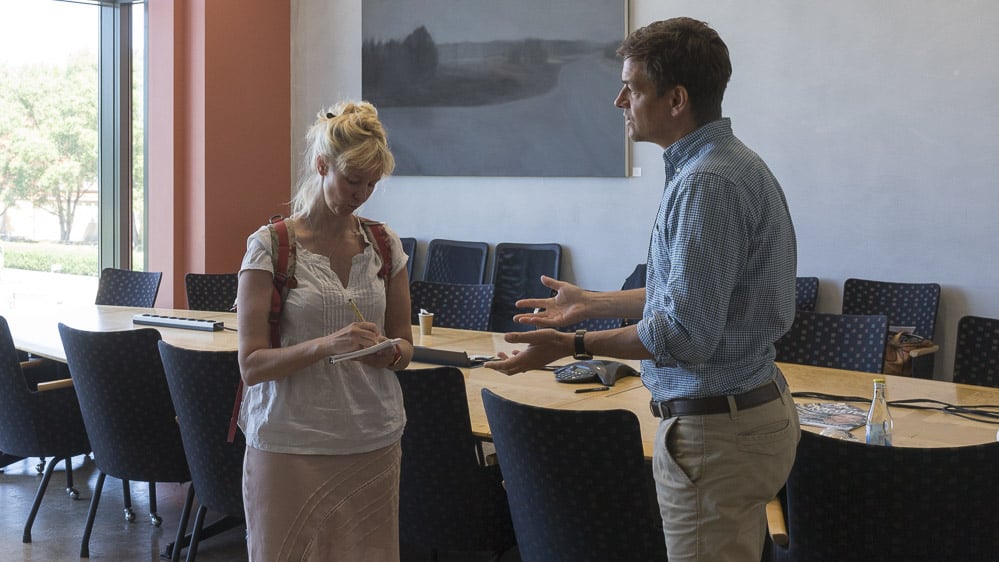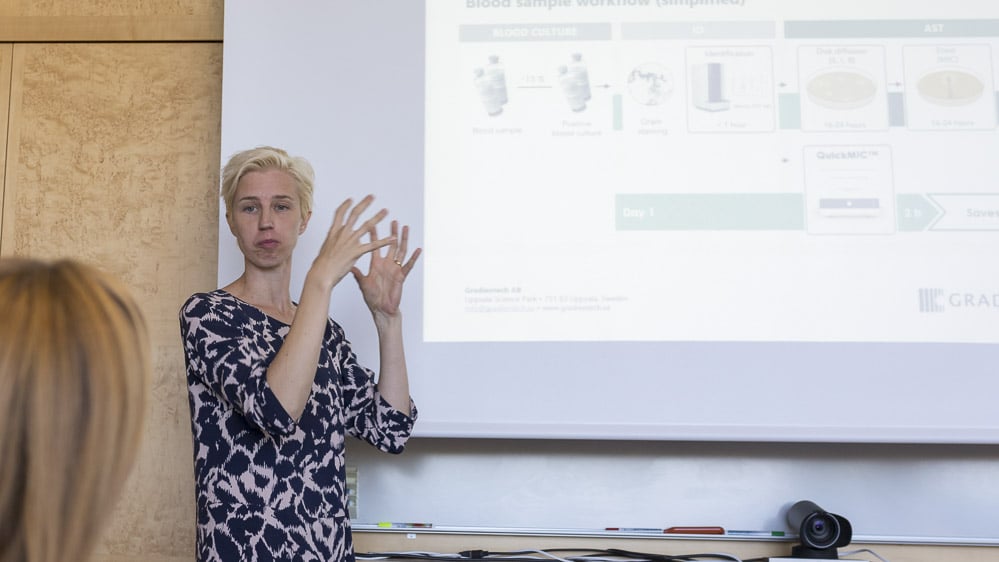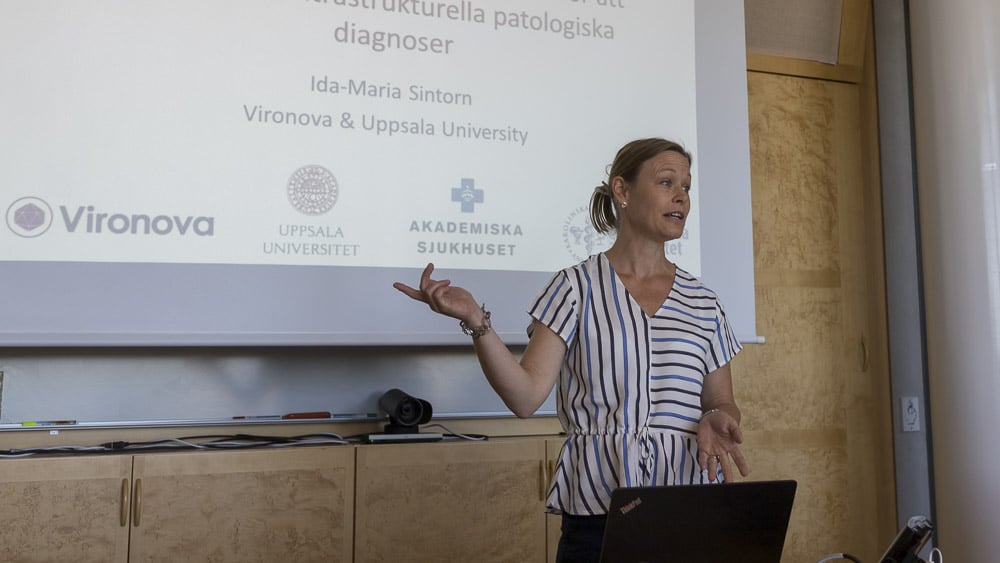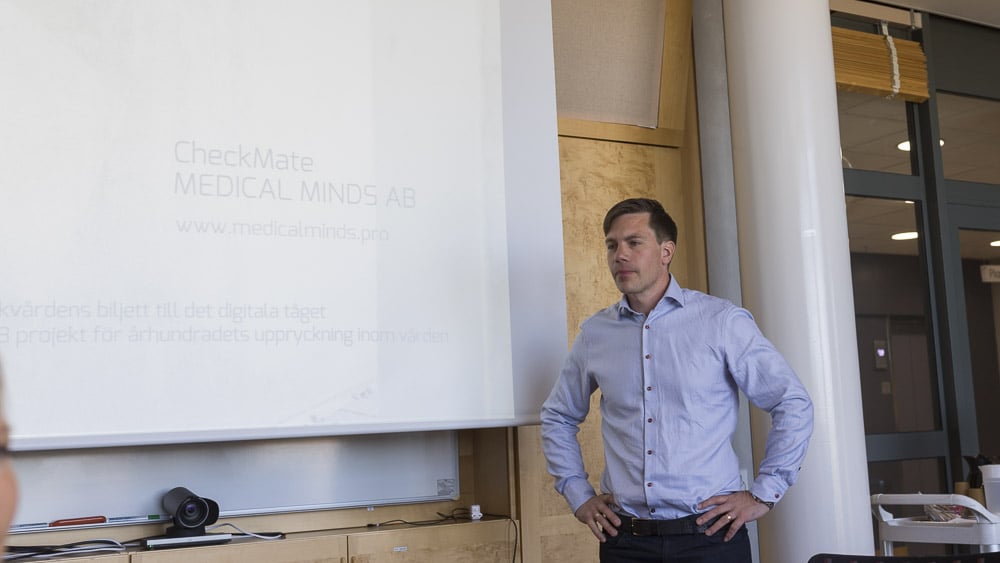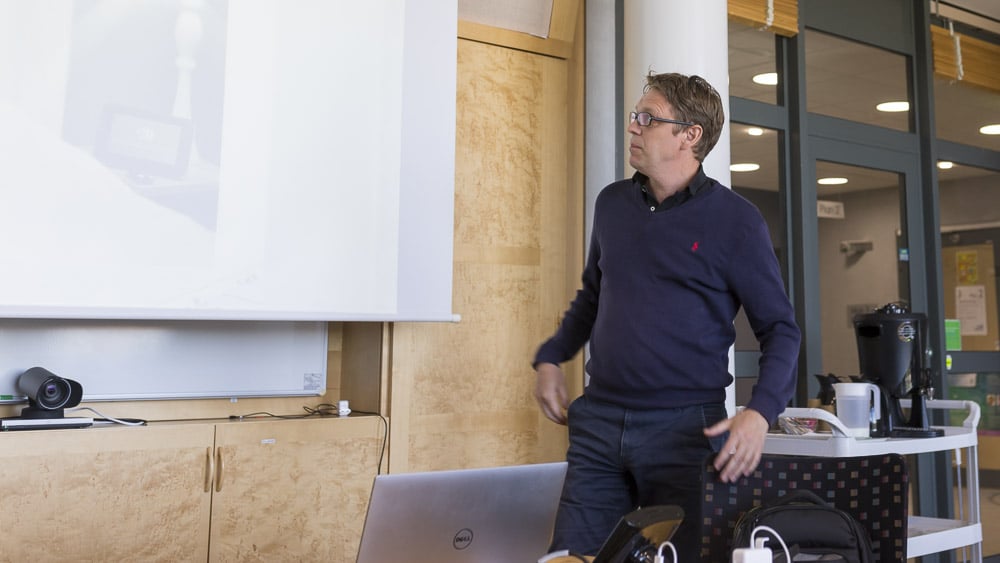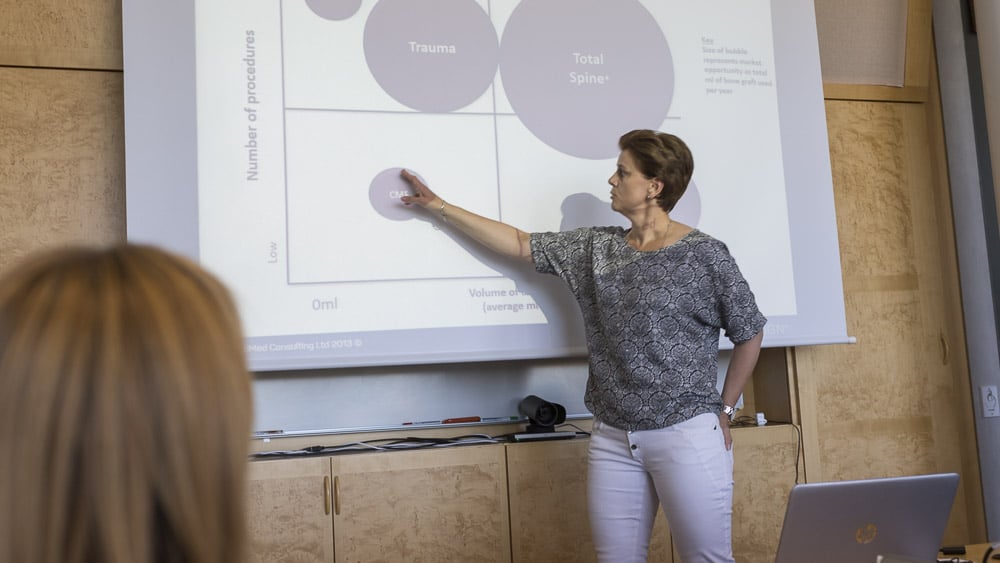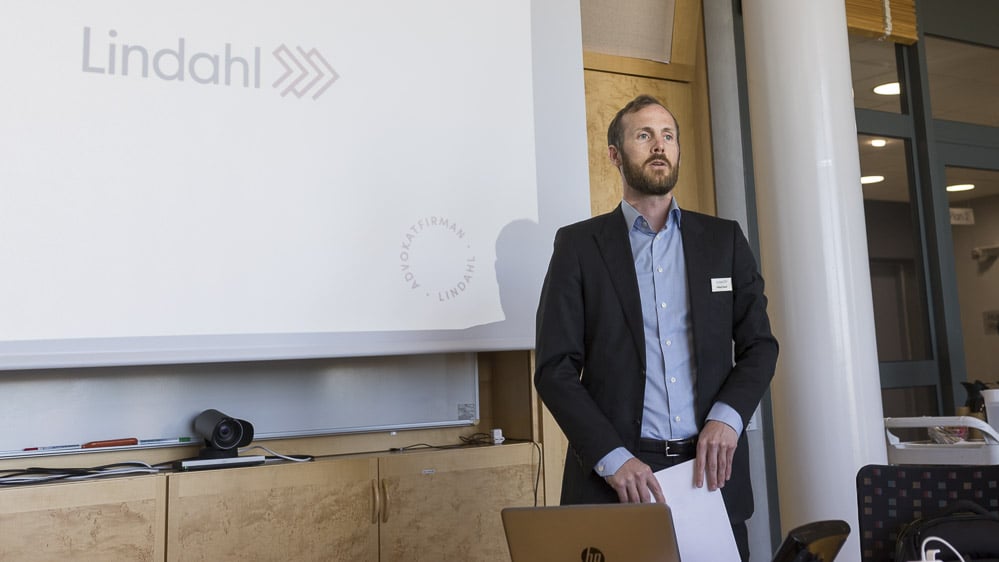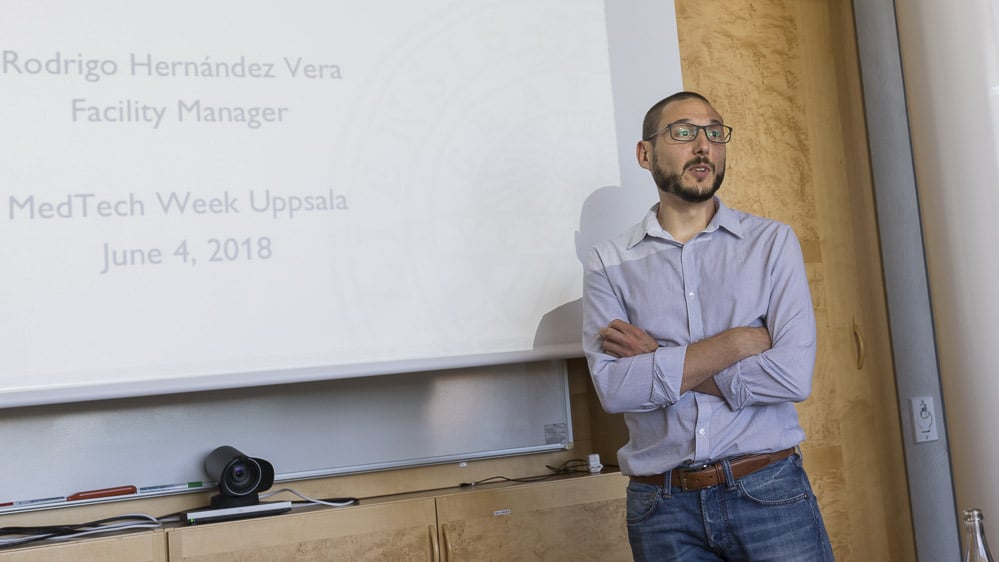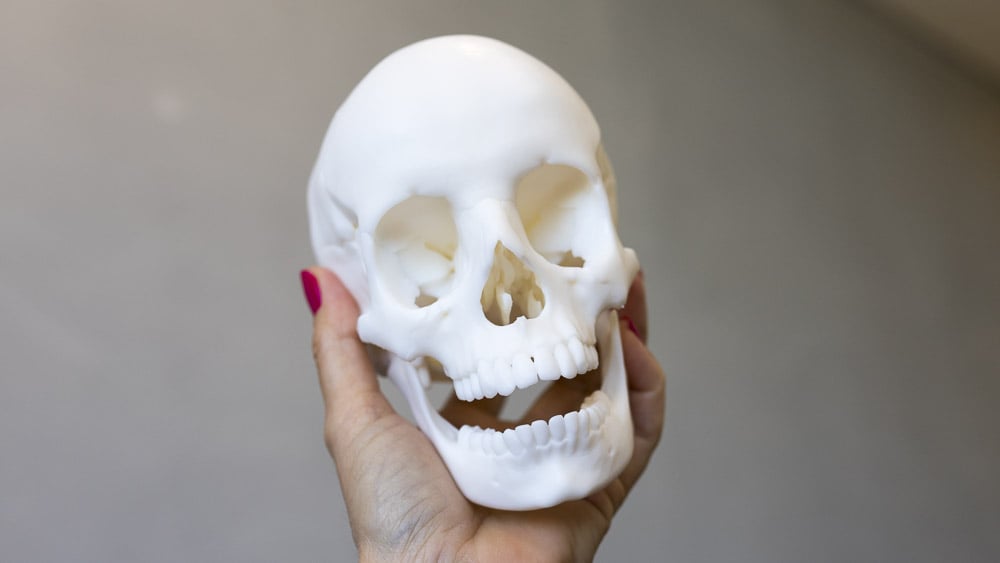
Uppsala-4602
Medical Technology thriving in Uppsala
Biomaterials that can grow together with bone and other medical technology projects thriving in Uppsala
Biomaterials that help bones grow together, how a quicker choice of the right antibiotics saves patients with sepsis, and the basics of the GDPR. Three topics served up in Uppsala during MedTech Week 2018. For this event Medtech Science & Innovation invited presenters from projects receiving Medtech4Health funding.
Medtech4Health’s Kristina Svensson reports from a day-long meeting in Uppsala, part of Sweden’s contribution to European MedTech Week.
Our node in Uppsala, Medtech Science & Innovation opened last year during MedTech Week 2017. This enchanted city of learning was just as sunny and dressed in its pre-summer colours as it was a year ago when we attended the festive opening ceremony. This year, a slightly smaller crowd gathered to learn about the projects and what they are doing – or plan to do – with the funds they receive from Medtech4Health.
Fredrik Nikolajeff, Medtech Science & Innovation
Medtech Science & Innovation is a research centre for advanced medical technology initiated in collaboration between Uppsala University and “Akademiska”, Uppsala University Hospital. The centre is now recruiting four research leaders who will be responsible for developing radiation therapy, sensor technology, computer-aided surgery and the implementation of research. The centre will have its physical residence on the hospital’s campus. Research activities will take place at the university’s medical and engineering faculties.
Sara Thorslund, Gradientech AB
The Uppsala company Gradientech received funding from Medtech4Health in 2016 and has now brought to a successful conclusion the project they received money for. It focused on developing a simple, rapid diagnosis of antibiotic resistance in sepsis. Sepsis is more common than myocardial infarction, mortality is high and the time factor is critical. Therefore, there is a willingness to pay for anything that can shorten the time it takes to diagnose correctly and choose the correct treatment. Gradientech’s system helps medical staff choose the right antibiotics by rapidly testing for antibiotic resistance. It comes into play after the diagnosis is made, a bacterial cultivation made and the gram status of the bacterium determined. The system uses Gradientech’s concentration gradient model. In the project for which the company received funding, they collaborated with a lab in another country to get antibiotic-resistant samples to test. It was instructive and sometimes led to unexpected results.
Ida-Maria Sintorn, Vironova AB
Most electron microscopes are large machines that require refrigeration and can only be handled by experts. Vironova instead has the MiniTEM, a smaller variant that is only about the same size as a filing cabinet. In addition, it is easy for generalists to use. The resolution of the microscope is of course somewhat smaller, but usually more than adequate. MiniTEM is used for the quality control of pharmaceuticals.
Vironova was awarded financing through one of Medtech4Health’s calls for funding applications to test the device for clinical use, for example, to diagnose from biological samples. In order not to drown in terabytes of data, it is necessary to determine exactly which points are relevant to study and which to ignore in all the information the test returns.
Mattias Tullberg and Mattias Dahlberg, Medical Minds AB
From high tech we switch to home care. Medical Minds strives to offer a portal that can act as a contact link between doctors and patients. The particular beneficiaries of their upcoming product are the 5% of patients who are major consumers of healthcare. The portal has the potential to save these patients many hospital visits. The idea is that the patient should have a station at home. To that they can connect sensors and other things that are relevant for just that patient. The sensors themselves are nothing that Medical Minds will develop themselves, instead, they collaborate with manufacturers. Their focus is on the actual connection. This enables doctor and patient to have one portal rather than several to keep track of.
Medical Minds used the funds they received through Competence Enhancement for Smaller Companies to hire a lawyer for more specialist input. They have chosen to stay within diagnosis rather than extending into therapy. Therapy has a higher ranking which would make it difficult to keep the software up to date. Their business model is that healthcare centres rather than private individuals will pay. The incentive is that healthcare centres using Medical Minds’ portal can be more efficient.
Kajsa Björklund, OssDsign AB
Unlike the other projects, OssDsign has only just received funding from Medtech4Health. Since they are all Game of Thrones fans, they have named their project “Stark” after the Stark family in the popular series. The two-year project focuses on an osteo-inductive biomaterial that can be used in spinal fusion operations. This is something that is done to remove pain. It is a common operation in the US (perhaps a little too common). In addition to screws and plates, different materials are used to fix the vertebrae.
Today, the fusion material used may come from a part of the patient’s hip bone (but this can prolong the operation), or bone from donors can be used (but this risks infection or incompatibility). Alternatively different synthetic materials may be used. The beauty of OssDsign’s material is that it can grow with the patient’s own bone. The material comes in the form of granules of a ceramic polymer.
The company sees the USA as their first market. In addition to the volume of operations there, it is easier to get this type of product approved in the US than in Europe. The FDA requires the preclinical trials of the product to be made without screws or plates. This is something OssDsign plans to do in 2019.
Michael Edquist, Lindahl AB
GDPR was the answer when Cecilia Persson and Fredrik Nikolajeff asked the participants in advance if there was anything specifically they wanted to hear about during the Uppsala’s MedTech day. This was why Michael Edquist from Lindahl was invited. Interest in his expertise was so great that, instead of half an hour, he spoke for a whole hour. Afterwards we felt we had an advantage living in Sweden. The data protection rules are, of course, the same throughout the EU, but in Sweden, for historical reasons, we seem to have a slightly more relaxed attitude than in some other countries.
While we were munching our sandwiches, Rodrigo Hernández Vega told us about U-PRINT , a new facility at Uppsala University with various types of 3D printers for additive manufacturing. Among other things, they can produce anatomical models in plastic, replacing real human bones, and different forms of prototypes. Rodrigo invited participants to put in requests for the sort of services U-PRINT might provide in the future.
As usual, it was really interesting to hear what Medtech4Health funds are being used for and learn how they are, and will be, improving healthcare and conditions for patients now and in the future.
AKTUELLT
Glad sommar önskar vi från Medtech4Health
Efter en intensiv vår är det snart dags för en välbehövlig sommarpaus. Men först ser vi fram emot att ses i Almedalen där vi är en del av mötesplatsen Tillsammans.
SO Västra stärker innovationskraften genom samverkan och erfarenhetsutbyte
Medtech4Healths nod SO Västra har gjort programmet till en naturlig del av innovationsarbetet i Västra Götaland. Här finns en stark samverkan där metoder och erfarenheter delas framgångsrikt.
Nytt verktyg ska bana vägen för smidigare breddinförande av medicinteknik
Först ut från Medtech4Healths strategiska projekt MedImpact är ett instrument för enklare breddinförande av teknik för egenmonitorering. Med instrumentets frågebatteri blir det möjligt att undvika fallgroparna vid ett breddinförande. Instrumentet finns på Medtech Arena.
Nya satsningar ska göra det lättare för små innovativa medicintekniska företag
Regeringen har gett flera nya uppdrag till myndigheter som arbetar med medicinteknik. Målet är att stärka sjukvården och förbättra Sveriges beredskap vid kriser.
NYHETSBREV
Följ nyheter och utlysningar från Medtech4Health - prenumera på vårt nyhetsbrev.

